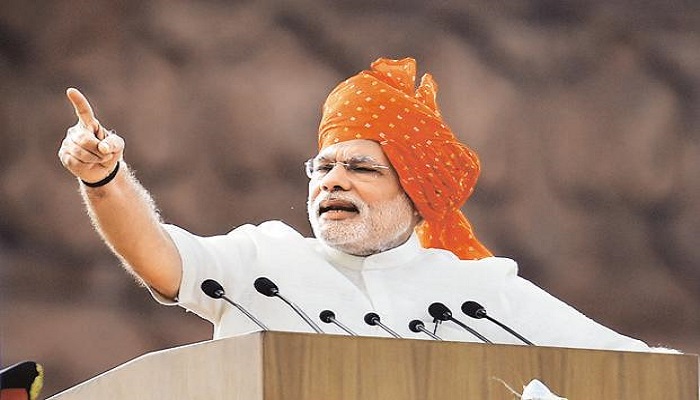
After the massive victory in Gujarat and UP Modi continues his leadership journey , Eyeing a rural outreach ahead of the general elections in 2019, the Narendra Modi government has drawn up tailor-made action plans for 115 identified “most-backward” districts in the country to improve their socio-economic profiles by making available basic services like healthcare, sanitation and education as well as basic physical infrastructure like roads and drinking water supply in a time-bound manner.
The 115 districts, including 35 affected by left-wing extremism, were selected on parameters like deprivation (extent of landless households), health & nutrition (institutional delivery, stunting of children and wasting in children), education (elementary dropout rate and adverse pupil-teacher ratio) and infrastructure (un-electrified homes, lack of toilets, villages not connected by road and lack of drinking water). The government’s focus is to work with states to bring a transformative change in these backward areas through rapid government-anchored programmes and interventions by 2022, the 75th year of India’s independence.
Recently, the Centre appointed one additional secretary or joint secretary rank officer as the “Prabhari” to work in a collaborative manner with the state and district teams to achieve effective convergence between various Central and state government schemes. The district collectors will be the chief executors of the action programmes in districts, which will be ranked annually based on their performance. Discussions are currently on between the Prabharis and collectors to prepare a deliverable action agenda by this month-end.
Steps are also being taken to establish a comprehensive database and an efficient feedback mechanism for real-time monitoring with quarterly and annual goals. In 2016, India ranked 131 among 188 nations in the UN Development Programme’s human development index (HDI) with major inter-state and inter-district variations. Nearly 40% of children born in India are stunted and/or underweight while almost 50% of women are anemic. On nutrition, India even lags behind its neighbors such as Pakistan, Bangladesh, Sri Lanka, Nepal, and China.
Among states, in Jharkhand nearly 50% children are underweight, 64% of class 5 students can’t read standard 2 English, the density of population to doctor/hospital beds are the lowest in the country and 40% households are not electrified. While at least one district has been included from each state under the backward district programme, Jharkhand has the highest number of districts with 19, followed by Bihar (13) Chattisgarh (10) and 8 each in Uttar Pradesh, Madhya Pradesh, Odisha. “We will sensitize the district authority on issues and assist them in the implementation of the action plan as well as do real-time monitoring,” said an official who is the Prabhari of a district. The officer recently spent a week in the assigned district and took stock of projects in health and education sector.

Post Your Comments